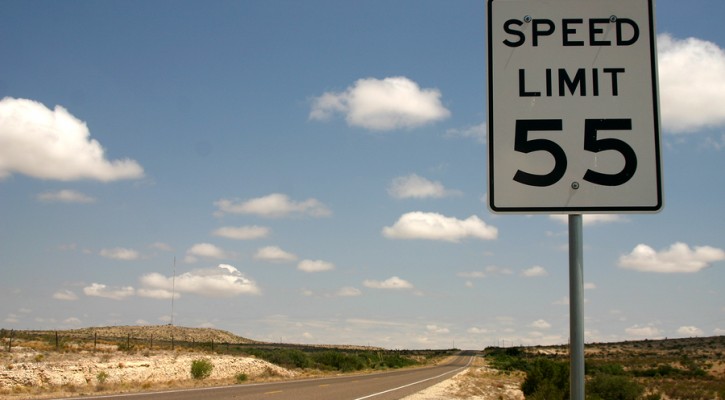
Motorcycle Safety and Speeding
May 7, 2014
As the hype over Motorcycle Awareness Month spreads across the country, law enforcement will be on the lookout for unsafe drivers as well as unsafe riders this summer. One of the riskiest riding habits, as well as the easiest traffic ticket targets, is speeding. So ride easy this summer and coast along at a comfortable speed. Those speed limit signs are set for your safety, as well as everyone else’s. #ridesafe.
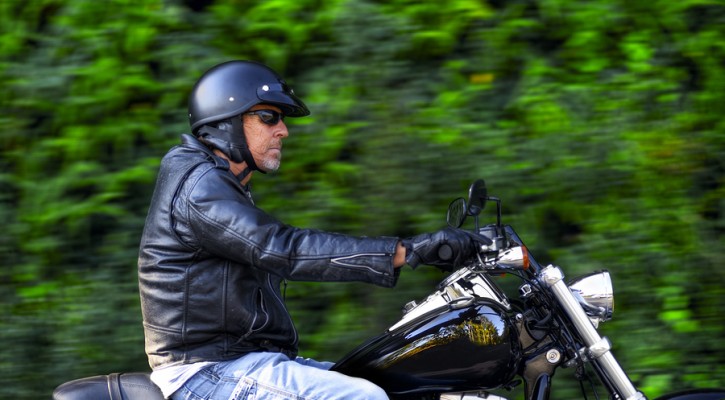
Motorcycle Awareness for the Clueless – Lesson 1
May 7, 2014
Lesson 1: Why is that scary biker honking at me?
One day, you were driving down the road, minding your own business, when suddenly you heard a motorcycle engine roar, a horn honk, and looked over to see a leather-clad biker passing you with startling speed. At the time, you might have wondered, “Why is that scary biker honking at me?”
Well, first of all, the biker isn’t scary just because he/she is wearing leather. Tough leather jackets help protect motorcyclists from road rash in the event of a crash. But, to answer the initial question: most bikers honk at cars to let them know they are there. The motorcyclist may be trying to escape your blind spot, hence the honking and quick acceleration. Simple as that.
So, the next time you hear a honk and notice it is a motorcycle passing you by, politely share the road and give that conscientious biker a friendly wave.
Causes of Motorcycle Fatalities
May 5, 2014
In 2008, motorcycle fatalities peaked at 5,312 deaths. Then, despite increased motorcycle ownership, fatalities dropped down to 4,469 deaths in 2009. This phenomenon occurred on the heels of a decade-long pattern of dramatic increases in the motorcycle fatality rate. It was a glimmer of hope in the face of ever-increasing motorcycle deaths.
However, since that glorious year in the history of motorcycle safety, fatality rates have been creeping up again, and were last reported at 4,612 in 2011. So, what happened? What caused the dramatic decrease in deaths, and what is fueling the steady increase today?
In honor of that one magnificent year in reduced motorcycle fatalities, and in celebration of Motorcycle Awareness Month, we’re going to break down the key causes of motorcycle fatalities in America.
Cars Making Left-Hand Turns. This is the single most dangerous situation for motorcyclists, accounting for more than half of two-vehicle motorcycle collisions.
Speeding. Supersport motorcycles are built for racing and modified for highway use, and sport motorcycles are very similar with a lower power to weight ratio. These bikes are designed for speed. The quick acceleration and excellent control make them great for experienced riders, however, the power may be too much for new riders, and too tempting for those prone to high-risk behavior. No matter what type of motorcycle you ride, take it easy and never go faster than your abilities and experience can handle.
Alcohol. Avoid alcohol when you ride. This is a no-brainer that too many motorcyclists fall victim to. Speeding and alcohol are the two biggest contributors to single-vehicle motorcycle accidents.
Head Injuries. The chances of dying in a motorcycle crash are exponentially higher without a helmet.
Lane Splitting. The close proximity to cars, reduced space for maneuverability, and the fact that cars don’t expect a vehicle to be passing them between lanes make the act of lane-splitting incredibly dangerous.
Road Hazards. Potholes, road cracks, slick conditions, uneven asphalt, gravel, roadkill and other debris pose a serious threat to motorcycle riders.
Inexperience. The increase in motorcycle safety classes and other programs may have had something to do with the dramatic decrease in motorcycle fatalities in 2009. Inexperienced riders should always seek out motorcycle safety courses that allow new motorcyclists to master both the basic, essential and advanced skills needed to ride safe.
Drivers and riders need to look out for each other, not just in May but all year long. Keep these common fatality causes in mind the next time you hit the road, and as always, #ridesafe.
May: Month of the Motorcycle
May 1, 2014
May is Motorcycle Awareness Month, and states across the U.S. are unleashing their public awareness campaigns to promote motorcycle safety.
In Texas, officials encourage motorcyclists to look out for each other, and have posted “Share the Road” and “Look Twice” signs to remind drivers to be safe as motorcycles increasingly come out of hibernation. Meanwhile, up in the north Michigan Secretary of State is promoting motorcycle safety by hopping on his Harley-Davidson Sportster and riding with a group of fellow motorcyclists. Governors, legislators, and average citizens are joining ABATE (American Bikers Aimed Toward Education) in conferences and events to promote the month of the motorcycle, with a great emphasis on biker safety and sharing the road.
Here are some helpful tips for motorists on the road during May’s Motorcycle Awareness Month:
- Always double-check mirrors and blind spots before changing lanes
- Look twice before pulling out of parking lots and driveways, or when turning at intersections
- Use those blinkers! Turn signals should be used when changing lanes, merging with traffic, or making turns
- Don’t be fooled by a flashing turn signal on a motorcycle – motorcycle signals are often not self-canceling. Wait to be sure the motorcycle is going to turn before you proceed.
- Give motorcycles more following distance, since they are capable of braking quicker and are more vulnerable in emergency situations
And, we have several important safety reminders for motorcycle riders as well:
- Wear a DOT-approved helmet
- Never ride while impaired
- Always signal turns, merges and lane changes
- Wear brightly colored protective gear, but ride as if you are invisible
- Avoid blind spots
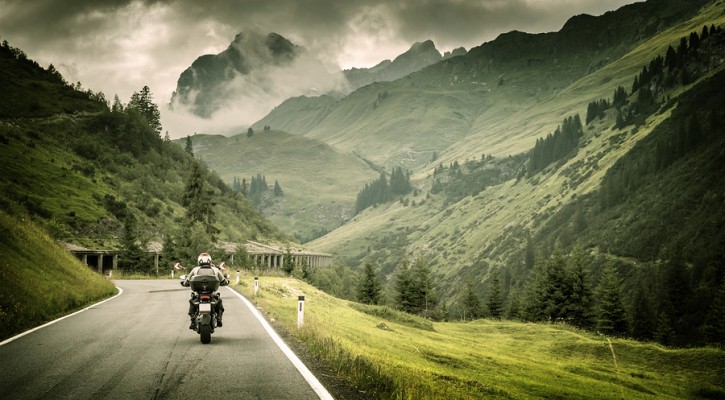
Riding in the Rain
April 21, 2014
Spring weather is a fickle beast. One minute it’s beautiful and sunny, the next minute cold wind is whipping rain across the road. And, you’re stuck out in the middle of it. Well, knowledge and preparation is the cure for most things – including the rainy riding blues. So, have a look at these tips for a smooth ride no matter what the weather.
1. Get the right gear. Riding in a waterproof/water resistant jacket, pants, goggles (or a full face helmet), motorcycle boots and motorcycle gloves will make your life easier in any weather. This gear is not only designed to protect you in the event of a crash, but also to prevent the crash in the first place. Goggles and helmets improve visibility in the rain, especially those designed with anti-fog features. The water resistant jacket and pants will keep you dry, and the gloves and boots are made to prevent slipping when things get a little wet. By remembering ATGATT (All The Gear All The Time), you’ll always be prepared for a little rain.
2. Clear the fog. Helmets and goggles have a tendency to fog up in rainy weather. While some people have newer helmets built with better ventilation to prevent fogging, most of us will have to deal with the fog issue. There are anti-fog sprays available, as well as plenty of home remedies that can be useful, though neither are 100% effective. The best trick for those with full-face helmets is to leave the visor slightly open – by just a hair – to allow fresh air to circulate and keep the fog from forming. Or, there are also breath guard inserts that fit on the inside of your helmet to prevent your breath from fogging up the visor.
3. Watch the road. All smart riders keep a keen eye on the road no matter what the weather, however, rainy conditions call for even more vigilance. Look out for slick spots such as train tracks, man hole covers, metal grates on bridges, and painted road surfaces (lane markers, turn arrows, etc). If these road hazards can’t be avoided, then be sure to cross them slowly with straight wheels. Also, avoid rainbow-colored water like the plague. There is no pot of gold at the bottom of that puddle, just some some very slick oil.
4. Avoid puddles. All puddles should be avoided. There is no telling how deep they are, what is at the bottom, and how much oil they have collected from the road. If you have an uncontrollable urge to ride through a rain puddle, just save it for your bicycle.
5. Slow down! Obviously, everything should be slower in the rain. Brake slower, turn slower, ride slower.
As always, it’s important to remain relaxed and enjoy the ride. Getting all cramped up with fear won’t improve the situation any, and may even be detrimental to your safety. So, just keep these tips in mind, ride easy, and remember to have fun. After all, you’re still alive and riding!
Three Miles
April 15, 2014
After 44 years of asking his wife for a motorcycle, this Wyoming man finally got one. However, he only made it three miles before tragedy struck. See the full story here:
http://www.huffingtonpost.com/2013/07/17/barry-strang-motorcycle-dies-three-miles_n_3610465.html
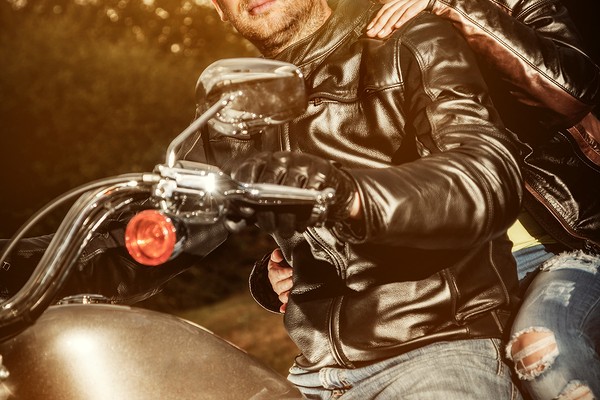
Motorcycle Safety Myths
April 14, 2014
This article from Geico covers a few common motorcycle safety myths. Know the truth about safety when it comes to your ride. See the full story here:
https://www.geico.com/information/aboutinsurance/motorcycle/insights/safety-myths/
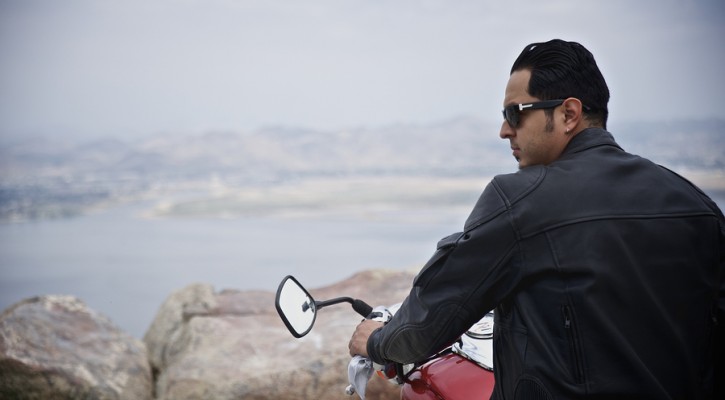
Spring Has Sprung, Take a Practice Run
April 14, 2014
Each spring, motorcyclists fall victim to the highest crash rates of the year. A big factor in the crash statistics has to do with rusty motorcycle skills. All bikers, experienced and newbies alike, should take an easy-going practice run to help revive the muscle memory and mental skills it takes to ride safely.
There are plenty of fun places to hang out with friends and practice motorcycle skills. As a teenager, we had an abandoned airstrip nearby, or parking lots in front of closed businesses. Many racetracks open up their venues to the public for motorcycle safety classes, or just to take a practice run. There are also programs sponsored by dealerships, such as Harley Davidson’s new rider, boot camp, and skilled rider classes. Either way, be sure to refresh your riding skills each spring before hitting the highways.
Become a Road Guardian
April 12, 2014
What would you do if you saw your fellow-motorcycle brethren go down in a serious crash? Most of us would do what we can, which mostly entails calling 911 and hoping for the best. However, if you became a Road Guardian, then that feeling of helplessness would be replaced by knowledge and purpose, which just might save a life.
Members of the Road Guardians are trained in First Response education, as well as general motorcycle safety, impaired rider education, apparel education and motorist awareness education. The purpose of the Road Guardians is to reduce injuries and fatalities by preventing accidents in the first place, and learning how to deal with the carnage after they happen.
There are both free and paid memberships available. For more information, visit www.roadguardians.org.
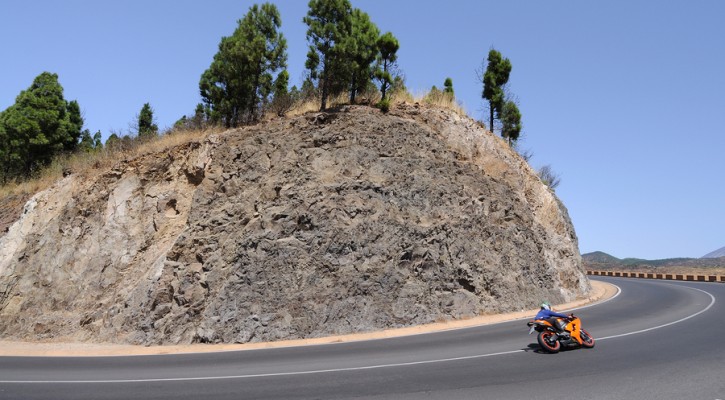
Know Your Limits
April 11, 2014
It’s important for motorcyclists to know what their skill limits are, and to practice pushing their limits in a controlled environment before hitting the road. This article from autoevolution.com stresses the importance of riding within your skill level, and demonstrates the consequences of an over-eager motorcyclist who speeds into a turn, panics, and crashes. See the full story and video here:
http://www.autoevolution.com/news/watch-and-learn-speed-turn-panic-crash-video-78343.html
